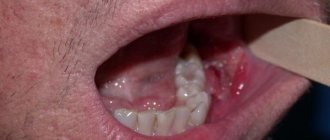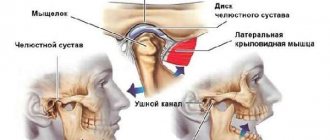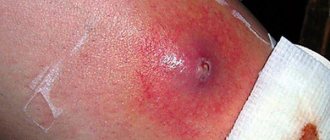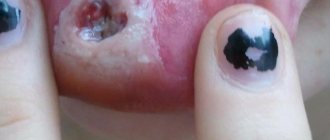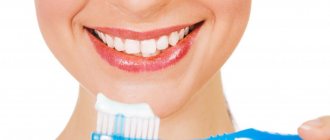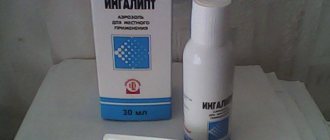When your skin is inflamed and red, you may not pay attention to the problem. Your main concern is likely how to stop the pain and discomfort. Skin inflammation occurs when the immune system reacts to a trigger causing a wide range of symptoms such as burning, itching, redness, heat, blistering and cracking of the skin. Inflamed skin is no joke, but there are ways to calm it quickly and effectively.
In this article, we'll look at the topic of skin inflammation, including some of its causes and the difference between acute and chronic inflammation. We'll also talk about what you can do to calm inflammation and make product recommendations to speed up results.
What is inflammation?
When you hit your foot, you feel a sudden surge of pain followed by a dull ache. You may also notice that your toe becomes red and may even become swollen. Inflammation is the body's natural response to injury - it is the body's way of signaling to the immune system that the injury needs to be healed and damaged tissue repaired. Without this natural process, wounds will never heal and infections can become fatal. If the inflammatory process continues for too long, it can also be dangerous.
There are two types of inflammation - acute and chronic.
- Acute inflammation occurs when an injury occurs, so it is a short-term reaction with localized effects. When you hit your foot and the area becomes red, warm and swollen, this is an acute inflammatory reaction. Acute inflammation causes blood vessels to dilate, increasing blood flow to the area and flooding the damaged tissue with white blood cells to begin the healing process. As the injury heals, the inflammation subsides.
- Chronic inflammation is also known as persistent low-grade inflammation - it is a long-term, widespread form of low-grade inflammation. This type of inflammation causes a slight increase in immune system markers that can be triggered by a perceived internal threat, even if there is no injury to treat and no disease to fight. White blood cells still flood the area, but with nothing to fight against, they may eventually begin to attack healthy cells and tissue.
Indigestion
With chronic inflammatory processes in the digestive organs, their function gradually decreases. This can manifest itself through:
- belching with a “rotten egg” smell;
- metallic taste in mouth;
- poor appetite;
- heaviness in the epigastric region;
- vomiting;
- diarrhea;
- flatulence;
- constipation and bloating;
- decreased quality of digestion and absorption of food;
- immunosuppression;
- exhaustion of the body.
It is important to remember that inflammatory processes in the digestive organs can cause the development of ulcers and diabetes.
Top 10 causes of skin inflammation
Now that you have more knowledge about what inflammation is, you can better understand skin inflammation. The skin becomes inflamed when it is irritated by an internal or external cause or trigger. Skin inflammation can present with several symptoms such as itching, burning or changes in skin color. In the early stages, inflamed skin may appear red or pink, but may also leave behind a discolored area of skin.
Here are the top 10 causes of skin inflammation:
- Immune system dysfunction
- Allergic reaction
- Contact dermatitis
- Bacterial, viral or fungal infection
- Photosensitivity
- Prickly heat
- Genetics
- Chronic stress
- Hormonal fluctuations
- Changes in your skin care routine
Diagnosis of skin inflammation usually includes examination and examination of the rash itself. Routine blood tests can help rule out certain conditions, and allergy testing can be used to confirm an allergy diagnosis. In more extreme cases, a skin biopsy may be required to diagnose the disease. If the inflammation is mild and directly related to changes in habits or lifestyle, testing may not be necessary.
Acute skin inflammation usually lasts six weeks or less, while chronic inflammation may become vague. This is true for some inflammatory skin conditions such as eczema, psoriasis and rosacea. Even if you can't completely eliminate the skin inflammation, you can help soothe the itching, redness, and discomfort associated with it.
How to avoid
When inflammation appears after acne, you should not take any measures on your own, but find out the doctor’s recommendations.
Thanks to this, the cause of the disorders within the body that causes the rash will be accurately established (hormonal disorders, allergies, hereditary factors, etc.).
The most effective preventive method is constant care of the skin of the face. It is necessary to make masks that regulate the functioning of the subcutaneous glands, use special tonics and cleansers.
Simple Tips to Calm Skin Inflammation
Understanding the root cause of skin inflammation is the first step to eliminating it. Once you have identified the problem, you can adjust your skin care or lifestyle as needed.
Here are some simple tips to calm skin inflammation:
- Avoid direct sunlight. Sun damage is one of the leading causes of skin inflammation, so be sure to wear a broad-spectrum sunscreen of at least SPF 30.
- Manage your stress levels. Chronic stress can cause or worsen skin inflammation, so take time to rest during the day and engage in relaxing activities to reduce stress levels.
- Eat a balanced diet. A balanced diet low in carbohydrates and sugars is good for your skin. Try a diet rich in fresh fruits and vegetables, whole grains and healthy fats (including fish) with limited amounts of red meat.
- Avoid extreme temperatures. Exposure of the skin to extreme temperature changes, such as cold weather followed by hot showers, can increase inflammation.
- Be careful with exfoliation. When your skin is inflamed, the last thing you can do is accentuate the inflammation with exfoliation. Avoid harsh scrubs and consider taking a break from exfoliation to focus on gentle cleansing and moisturizing.
- Take a break from your daily skin care routine. Skin inflammation can make your skin especially sensitive even to ingredients you use regularly, so consider taking a break from your skin care routine and avoid having to hide your inflammation with heavy makeup.
The tips mentioned above can help with mild and occasional skin breakouts, but if it becomes a chronic problem you need to seek help. A dermatologist or other skin care specialist can help you get to the bottom of your skin inflammation and give you advice on how to deal with it.
Inflammation of the tonsils: symptoms and treatment in adults
Varieties of the disease
Often in our lives we experience discomfort in our throat, as if a fish bone is stuck and it hurts to swallow.
This is the beginning of inflammation of the tonsils and tonsils. This is how a throat disease begins, which is called sore throat or acute tonsillitis. This is usually associated with a streptococcal infection, which resides in the loose tissues of the larynx and may not appear immediately. It camouflages itself and lies dormant in the body for a long time, waiting for the right moment that can provoke its activation. After all, the tonsils are an organ of the human immune system and their first task is to protect against pathogenic bacteria.
Therefore, they take the first blow and often become inflamed. Sore throat is manifested by a very high temperature, pain in the throat and lymph nodes, and white plugs in the tonsils.
Children and adults under 40 years of age are most often affected by this disease. Afterwards, the tonsils lose their function of protecting against microbes and can then completely atrophy.
Sore throat has two types:
- Compensated. Here the body turns on its defenses to fight the infection, and the disease proceeds quite easily, and only the symptoms of a sore throat appear, but there are no consequences.
- Decompensated. If the patient has a weakened immune system, then there are often complications in the heart, kidneys and musculoskeletal system. This happens with untreated tonsillitis, when general health improves, but the infection does not disappear. And with stress and hypothermia, the disease returns with renewed vigor and exhausts the body.
Causes of inflammation of the tonsils
Sore throat is an infectious disease, and a child or adult can become infected through contact with a sick person. And not only by airborne droplets, but also when using its hygiene items and utensils. Less commonly, infection is possible from a patient who has had a sore throat.
There are also other causes of sore throat:
- In adults, tonsillitis is caused by pathogenic bacteria such as pneumococci, staphylococci and streptococci. And children become infected with intracellular microbes (mycoplasma and chlamydia). This type of sore throat is called monocytic. At the same time, not only the lymph nodes, but also the liver and spleen enlarge.
- Mushrooms (Candida). They affect the tonsils and lead to their inflammation with reduced immunity. In a healthy human body, spores are present in small quantities, but with long-term use of antibiotics, our natural defense mechanism (immunity) weakens, and bacteria spread incredibly quickly. The tonsils can no longer stop them. A cheesy coating appears. It is necessary to treat with antifungal agents.
- Hypothermia. When there is a sharp change in temperature, we inhale cold air through the mouth, and preferably through the nose.
- Improper diet, which leads to a decrease in overall immunity.
- Mechanical damage to the tonsils.
- Long stay in water during the swimming season. In hot weather, drinking cold drinks leads to severe inflammation.
- Untreated diseases. These include: sinusitis, sinusitis, dental caries and gum disease.
- Alcohol and tobacco abuse.
- Sore throat can be a concomitant disease with diphtheria, scarlet fever and measles.
- Hereditary predisposition and genetic disorders.
Symptoms of inflammation of the tonsils and treatment in adults
In medicine, sore throat is divided into several forms:
- Catarrhal.
This disease is caused by a bacterial or viral infection of the upper respiratory tract affecting the lymphoid ring of the pharynx, and is quite simple. It is transmitted by airborne droplets from a sick person to a healthy person. In terms of symptoms and treatment, this type of acute tonsillitis is considered the mildest. The tonsils are not very enlarged, the body temperature is low-grade, and the pain in the larynx is not very pronounced. Dryness and soreness in the throat predominate. Redness of the tonsils and absence of pus are detected. When palpated with fingers, the lymph nodes are enlarged and painful. Recovery occurs within 5-7 days. A dangerous complication is the development of laryngitis.
- Follicular.
This is an acute purulent disease of the follicles of the palatine tonsils. And it appears after prolonged catarrhal inflammation of the tonsils or as an exacerbation of the inflammatory process. The appearance of sharp pain when swallowing saliva or food, painful sensations often radiate to the ears (stuffing, noise). Yellow-white pustules appear on the tonsils - follicles that are visible on the mucous membrane of the tonsils. The symptoms of the disease are identical to the flu: body and joint aches, severe fever, headache. The temperature remains at high levels and reaches 38 - 39 degrees, it is very difficult to bring it down during the first day. Regional (submandibular and cervical) lymph nodes are slightly enlarged and painful on palpation. Recently, follicular tonsillitis occurs without body heat, and doctors do not issue sick leave. The patient has to be at the workplace, which leads to various consequences. It is important to know how to cure inflammation of the tonsils so that the following complications do not occur: meningitis, sepsis, rheumatism of the heart, arthritis, peritonsillar abscess (ulcers on the follicles break out).
- Lacunarnaya.
The symptoms are identical to follicular tonsillitis, but the purulent plaque is gray or yellowish in color and occurs in the area of the glandular lacunae. It can be easily removed with a medical spatula. The tonsils become red and swollen. Regional lymph nodes are slightly enlarged. Aching pain appears in the lower back and calf muscles. Patients experience chills, headache, nausea and vomiting. The duration of treatment is about 14 days. The main complication in adults is conjunctivitis, acute otitis media of the ears, suffocation (false croup) and indigestion.
- Phlegmonous.
Or acute paratonsillitis. This is an inflammation with purulent discharge of the tonsils. This disease can occur after diphtheria sore throat. Less common are follicular or lacunar complications. Symptoms appear within 3 hours. Acute pain is observed in one of the tonsils (abscess). If the tonsils are inflamed, you must immediately contact a medical facility and begin treatment as soon as possible. The patient feels a little better when he lies down on the half where the inflammation occurs. There are also a number of distinctive features from other sore throats:
- Complete loss of appetite. The patient refuses to eat and drink due to severe pain.
- Significant change in voice when speaking (nasalness, hoarseness, and even temporary loss of speech).
- Impaired functioning of the upper and lower jaws. The patient cannot open and close his mouth or swallow saliva.
- Unpleasant purulent odor from the throat.
- Heat.
- Weakness, impaired performance, chills. Enlarged and painful lymph nodes.
- Formation of a purulent focus that must be opened in a medical facility.
The main complications are general blood poisoning, meningitis, and brain abscess.
- Herpetic.
This sore throat is a type of viral infection and is transmitted through the oral-fecal route or through discharge from the nasopharynx. The causative agent is the Coxsackie virus, which spreads in the summer season. The incubation period is 14 days. The symptoms of the disease are similar to the flu, and patients making a big mistake when taking anti-flu drugs. After three days, signs appear:
- A sore throat and a lump in the throat, and then an unbearable pain that prevents you from eating.
- Insomnia, leading to nervousness and irritability.
- Aches all over the body.
- A sharp increase in temperature to a critical level.
- The appearance of small red dots on the back wall of the throat, which after two days turn into white bubbles.
- Headache.
- Intestinal tract disorder.
- Salivation and unpleasant odor from the throat.
If these signs of inflammation of the tonsils appear in adults, you should not self-medicate, but should immediately consult a doctor to avoid complications such as meningitis, encephalitis and myocarditis. The medical institution will prescribe tests for serological and virological studies.
Treatment methods
If you suspect a sore throat, you should call a doctor at home, and before his arrival, gargle every half hour. A warm solution of soda with a pinch of salt and a few drops of iodine is suitable for this. The doctor will later prescribe a solution of Furacilin, Eludril or Rivanol to rinse the larynx.
In order for the product to properly help remove and wash away pus, germs and bacteria from the tonsils, it is necessary to throw your head back as high as possible and hold your breath while rinsing.
To reduce pain, you can take absorbable lozenges: Strepsils, Faringosept, Falimint and other drugs with menthol, honey or lemon.
Throat irrigators are also useful, such as: “Hexoral”, “Ingalipt”, “Miramistin”, “Aqualor”, “Proposol”, “Bioparox”, “Lugol-spray”.
Next, only a medical professional will competently tell you what to do if your tonsils are inflamed.
Diagnostics
The therapist conducts an examination at home or in the hospital:
- Measures temperature.
- Visually examines the throat for redness and enlargement of the tonsils.
- Palpates the lymph nodes.
- Listens to the patient's complaints.
- Takes a swab from the tonsils to determine the type of infection (bacteriological culture).
- Writes a referral for urine and blood tests.
- If necessary, refer the patient for an MRI.
Expert recommendations
The doctor will prescribe treatment and give instructions:
- Bed rest.
- Drink plenty of warm tea with herbs, lingonberry or cranberry juice, if there are no contraindications (renal failure or hypertension).
- Rinse or irrigate the larynx.
- Taking analgesics and antipyretics, such as Ibuprofen, Aspirin, Paracetamol, Analgin. They not only cope with high fever, but also provide relief for eating and drinking.
- It is necessary to eat warm porridge, puree soup, steamed cutlets, broths, and jelly. Forget about salty, coarse and smoked foods. The consumption of citrus fruits is also prohibited.
- How to relieve inflammation of the tonsils with the help of antibiotics is determined only by the therapist after receiving the test results. Viral forms of sore throat cannot be treated with them, but will only cause harm to the body. They are prescribed for illnesses caused by bacteria and fungi. Self-administration of antibiotics is strictly prohibited. The doctor prescribes penicillin drugs: Sumamed, Suprax, Amoxicillin in tablets or injections.
- After these procedures, improvement occurs on the third day, but in no case should treatment be stopped, since the body’s immune system is weakened by the fight against microbes, and the disease may return with renewed vigor. Therefore, the doctor must prescribe immunomodulators, such as Cytovir-3.
This drug must be used from the first day of illness. Especially if the sore throat is extremely severe, and the patient’s immune status is significantly below normal, and the body is tired of fighting various infections. We figured out how and with what to treat the tonsils when they are inflamed, but without an immunostimulant such as Cytovir-3, the disease will drag on for a long time.
Advantages of "Tsitovir-3":
- Increases the patient's cellular immunity.
- Produces antibodies that fight antigens.
- Helps the body fight sore throat.
- Copes with viral infections of the respiratory system.
It contains three components: bendazole, thymogen and ascorbic acid. Medicinal substances do not enter into a chemical reaction with each other, but in the body they have an effect by complementing each other.
"Tsitovir-3" promotes five-fold resistance to angina pathogens. A patient who initially takes this drug feels much better on the second day, he does not experience protracted forms of the disease, and the likelihood of complications is reduced by 7 to 12 times.
Now it has become clear what to do if the tonsils are severely inflamed. The first step is to boost your immunity to fight and quickly recover. The recovery process is quite long and difficult, and in order not to get sick you need to lead a healthy lifestyle.
Preventive measures
We all know very well that it is better to prevent a disease than to treat it for a long time. Therefore, it is worth paying special attention to the prevention of sore throat so that there are no complications in the future:
- It is necessary to maintain oral hygiene. Brushing twice a day, gargling, and flossing after every meal keeps germs from growing. You should also visit the dentist once every six months.
- Exercising will greatly strengthen the immune system, especially in the fresh air. You can run in the morning or walk to work and back, without using the elevator.
- Hardening has saved people from viral infections more than once. It is necessary to douse yourself with lukewarm water in the morning and lower its temperature every day. Or just dry yourself with a wet towel.
- Eat properly and balanced. Eat more vegetables and fruits, do not eat unhealthy foods (chips, soda, etc.). In autumn and spring, take vitamin complexes and immunomodulators.
- Maintaining order in the house (daily wet cleaning, ventilation of the room) is the key to your health.
- A trip to the seaside will help restore and strengthen your immune system.
In our article, we described in detail how to treat inflammation of the tonsils. Use our recommendations and stay healthy.
The Best Yon-Ka Paris Products to Soothe Inflamed Skin
Giving your skin time to rest and recuperate is the best thing you can do to calm inflammation. At the same time, there are certain medications that can help speed up the process and also eliminate some of the main causes of skin inflammation.
Here are the best Yon-Ka Paris products to help soothe inflamed skin:
- Creme Peaux Sensibilies is a soothing cream specially designed for sensitive and reactive skin. It contains a Sensibiotic Complex of pre- and probiotics to desensitize the skin. Balancing the microbiome and strengthening the skin's protective barrier. Apply morning and/or evening after thorough cleansing using light circular motions and toning.
- Sensitive Creme Anti-Rougeurs - Soothe redness with this soothing cream. Corrective treatment to relieve signs of discomfort and reduce localized redness. The cream also contains green mineral pigments for gentle color correction. Apply daily and evening after cleansing and toning.
- Sensitive Masque - Made with a complex blend of soothing botanicals such as yarrow, arnica, German chamomile and witch hazel. The mask is a classic Yon-Ka for sensitive, reactive and inflamed skin. Apply 1 to 3 times a week after cleansing and toning. Remove after 10 minutes, then apply excess to skin and moisturize as desired.
- Nettoyant Creme Cleanser - A preferred choice for sensitive and reactive skin, this soothing cleanser soothes and cools skin while gently removing all traces of makeup. Apply with fingertips in light circles, rinse with cool water and pat dry - avoid rubbing.
Skin inflammation cannot always be relieved immediately; sometimes it takes time. Take care of your skin and make sure it is properly cleansed and moisturized.
Causes of the disease
To relieve gum inflammation, the first step is to establish the factors that triggered its development. Having established the cause of the disease, it will be much easier to get rid of its symptoms, because having enough information about the causative agent of the disease, it will be much easier for the doctor to choose and prescribe effective treatment.
You can relieve gum inflammation at home if the cause of its development is:
- periodontitis. This disease is classified as infectious; it manifests itself against the background of pathologies such as sinusitis and advanced pulpitis. In addition to damage to the gum tissue, the disease is characterized by a number of accompanying symptoms, in particular bleeding gums, acute pain, swelling of the cheek, mobility of dental units and the formation of purulent wounds on the oral mucosa;
- periodontitis. The danger of the disease is that its development can lead to tooth loss. The characteristic signs of the disease are as follows: bleeding gums during hygiene procedures, discomfort when chewing food, and the appearance of a putrid odor from the mouth. At the same time, it is possible for the gum tissue to peel off from the bone, which leads to the formation of a pocket, which is a favorable environment for the settlement and development of pathogenic microflora. Lack of treatment threatens the occurrence of acute pain and the formation of pustules, from which pus comes out over time. The development of pathology is accompanied by an increase in temperature and redness of the affected gum tissue. An advanced form of gingivitis can provoke periodontitis;
- gingivitis. The disease is characterized by the following symptoms: fighting sensations due to mechanical impact on the affected tissues, bleeding, redness of the gums, and plaque deposits on the enamel surface. If the patient’s immunity is weakened, the dynamics of the disease’s development are higher. The lack of body resistance leads to an increase in temperature and a general deterioration in the patient’s condition. A white coating forms on the mucous membrane, and an unpleasant putrid odor appears from the mouth. Factors contributing to the development of gingivitis include hormonal imbalances, improper oral care or its complete absence, as well as dentist errors during treatment. Thus, constant injury to the mucous membrane with a filling or crown that was incorrectly installed by a doctor can lead to the manifestation of pathology.
Mouth rinse as a way to relieve inflammation
I remove inflammation with rinsing solutions - it is quite possible, since these products contain elements that have an antimicrobial effect. Rinse solutions are indispensable at home. In addition to their therapeutic effects, they cleanse the oral cavity of food debris and contribute to better hygiene procedures.
Doctors advise using the following drugs:
- Chlorhexidine. The product disinfects the oral cavity; it is recommended to use it after eating;
- Furacilin. Method of using the antiseptic: dissolve the tablet in warm water and rinse your mouth with the resulting solution;
- Chlorophyllipt. The product should be diluted in water. The rinsing procedure is carried out in the morning, lunch and evening;
- Hydrogen peroxide. Dilute in warm water and rinse your mouth after eating.
How to relieve inflammation in a child
In case of inflammation of the gums in a child, it is better to consult a dentist. At home you can use:
- rinsing solutions based on calendula, chamomile, yarrow, sage. These herbs tend to have a disinfecting and analgesic effect;
- infusions for rinsing from oak bark. The drug helps strengthen gums and teeth;
- If the child is small and does not yet know how not to rinse his mouth, you can use Cholisal medicinal gel.
To avoid inflammation of the gum tissue, dentists recommend visiting a doctor at least twice a year, eating solid foods high in vitamins, and observing good oral hygiene. Particular attention should be paid to the choice of toothpaste. It is advisable to use pastes containing extracts of medicinal herbs and anti-inflammatory elements.
Patients who suffer from hemorrhoids assess the condition during an exacerbation of the pathology as difficult to tolerate. Severe, persistent pain greatly reduces the level of comfort in life. Inflammation can occur suddenly and a person will not be ready for it, so people who suffer from hemorrhoids need to know how to combat this disease. Traditional medicine methods and folk remedies can help with this.
Treatment with folk remedies
You can remove inflammation at the initial stage using folk recipes. The following have a beneficial effect:
- mask made from raw beets. Method of preparation: grate the vegetable on a fine grater, add a small amount of vegetable oil, apply to the affected area and leave for at least 15 minutes. You can repeat the procedure 3-4 times a day;
- a product based on medicinal herbs and tooth powder. Medicinal herbs are ground in a blender and mixed with tooth powder. The resulting mixture should be applied to the damaged tissue with massaging movements using a pre-moistened toothbrush. The manipulations need to be done twice a day for 10 days. After the manipulation, it is necessary to clean the oral cavity of any remaining product. This can be done using a rinse solution. To prepare the drug, as a rule, they use bergenia root, dried cloves, galangal (leaves);
- freshly squeezed vegetable juices;
- honey;
- beeswax.
